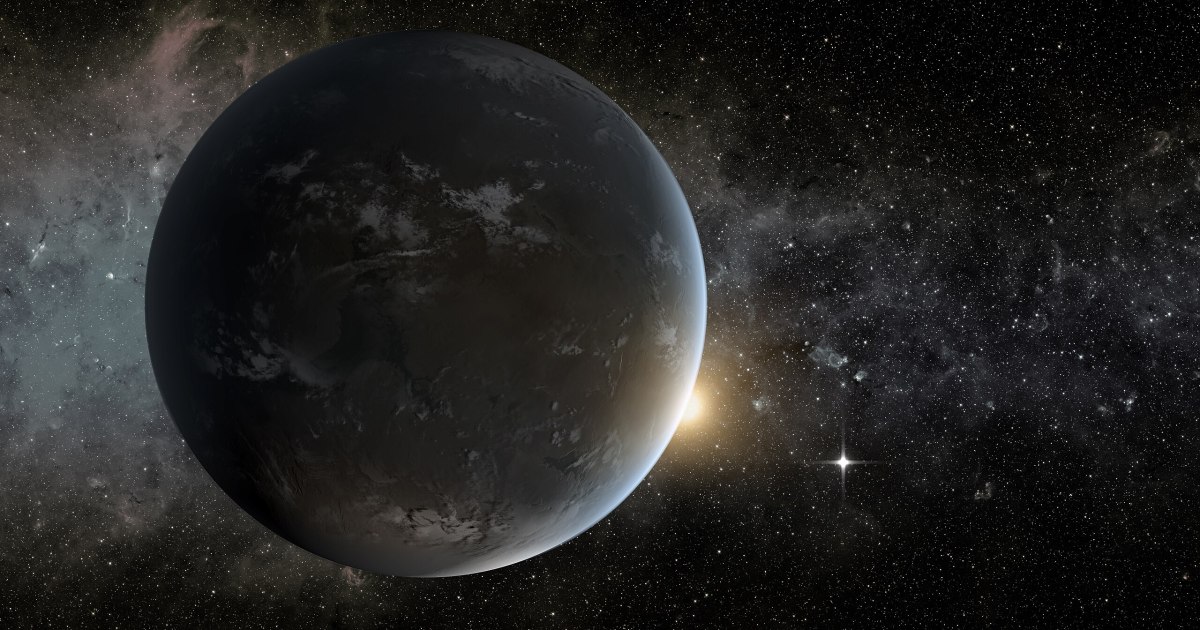Skip to content
In the search for life in the Universe, the ultimate goal is to find an inhabited planet beyond Earth. How will we know when we’ve made it?
When an exoplanet passes in front of its parent star, a portion of that starlight will filter through the exoplanet’s atmosphere, allowing us to break up that light into its constituent wavelengths and to characterize the atomic and molecular composition of the atmosphere. If the planet is inhabited, we may reveal unique biosignatures, but if the planet has either a thick, gas-rich envelope of volatile material around it, or alternatively no atmosphere at all, the prospects for habitability will be very low.
Key Takeaways
-
Ever since we discovered that there were other planets and worlds than Earth, both in our own Solar System and around other stars, we’ve wondered about what life forms might exist on them. -
While most of the worlds we’ve found so far appear to be indistinguishable from completely lifeless and uninhabited, there are signatures that life produces that can strongly hint at the presence of a living world. -
But how will we know when we’ve gotten there? How can we distinguish between an inhabited world and a very different-from-ours uninhabited world with those same key signatures? Here’s where we are today.
Sign up for the Starts With a Bang newsletter
Travel the universe with Dr. Ethan Siegel as he answers the biggest questions of all.
Out there in the Universe, somewhere, a second example of an inhabit world or planet likely awaits us. It could be some other planet or moon within our own Solar System; it could be a spacefaring, interstellar civilization, or it could be an exoplanet around a different parent star. Although the search for life beyond Earth generally focuses on worlds that have similar conditions to Earth, like rocky planets with thin atmospheres and liquid water on their surfaces, that’s not necessarily the only possibility. The truth is that we don’t know what else is going to be out there, not until we look for ourselves and determine the answers.
And yet, if you’ve been paying attention to the news, you might think that super-Earth or mini-Neptune type worlds, such as the now-famous exoplanet K2-18b, might be excellent candidate planets for life. Some have even gone as far as to claim that this planet has surefire biosignatures on it, and that the evidence overwhelmingly favors the presence of life within this planet’s atmosphere. But the science backing up that claim has been challenged by many, including our two podcast guests for this episode: Dr. Luis Welbanks and Dr. Matthew Nixon.
Beyond the breathless and sensational claims, what does the actual science concerning K2-18b in particular, and of biosignatures on exoplanets in general, actually teach us? What does the evidence indicate, and if we are going to find inhabited exoplanets, what will it take for us to actually announce a positive detection with confidence and less ambiguity? That’s what this episode of the Starts With A Bang podcast is all about; I hope you enjoy it!
Sign up for the Starts With a Bang newsletter
Travel the universe with Dr. Ethan Siegel as he answers the biggest questions of all.
Somewhere, at some point in the history of our Universe, life arose. We’re evidence of that here on Earth, but many big puzzles remain.
The relic signal that first proved the Big Bang has been known and analyzed for 60 years. Join us at the frontiers of modern cosmology!
Once every 12 years, Earth, Jupiter, Uranus, and Neptune all line up, opening a window for a joint mission. Our next chance arrives in 2034.
Here in 2025, many of us claim to come to our own conclusions by doing our own research. Here’s why we’re mostly deluding ourselves.
The hunt for extraterrestrial life begins with planets like Earth. But our inhabited Earth once looked very different than Earth does today.
These short books offer insights and meditations on timeless themes, without the time commitment.
